“The Way It Looks Today: A Camera Tour of Church History Sites in Missouri,” Ensign, Apr. 1979, 32
The Way It Looks Today:
A Camera Tour of Church History Sites in Missouri
In the Ensign’s continuing tour of Church history sites, we move this month to Missouri, one of the most beautiful—yet at times the most troubled—locales in our past. Max H Parkin, of the LDS Institute adjacent to the University of Utah, accompanied Eldon K. Linschoten to photograph these sites, provided material for the captions, and wrote “Missouri’s Impact on the Church,” p. 56.

An aerial view of Independence, Missouri. Joseph Smith dedicated a three-acre temple lot here on 3 August 1831. Bishop Edward Partridge purchased sixty-three acres of temple lands for $130 on December 19. In this photograph, the temple lot is left of the dome-shaped RLDS Auditorium. Just above the auditorium is the LDS visitors’ center, then the parking lot of the LDS stake center, and the stake center itself, with the mission home and the old chapel housing the mission office immediately above. On the temple lot itself is the white frame meetinghouse of the Church of Christ—Temple Lot. Across the street left and down slightly is the RLDS Old Stone Church. Up the curved road on the left, after it straightens out, is the Jackson County courthouse site mentioned in D&C 57.
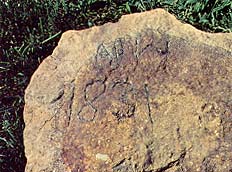
A 1929 excavation of the temple site unearthed this fourteen-inch square of limestone about forty feet from the temple’s proposed northeast corner, the date—1831—scratched into its surface. The Church of Christ—Temple Lot owns it.
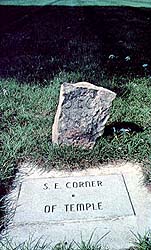
The rough stone was excavated at the same time, marked “S E C T 1831” and meaning “south-east corner, temple.”

Green but lonely, the old Indian cemetery is near the Delaware village where Oliver Cowdery and Parley P. Pratt preached in 1831. It lies west across the Missouri River in Kansas—Indian territory then.
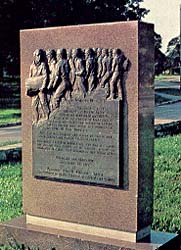
1862 monument commemorating Kansas City’s first schoolhouse; Mormons laid its first log on 2 August 1831.
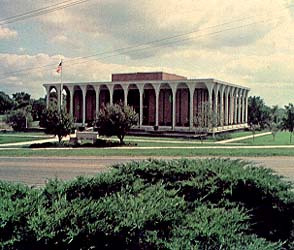
Independence Visitors’ Center, dedicated in 1971 on part of the temple lot.
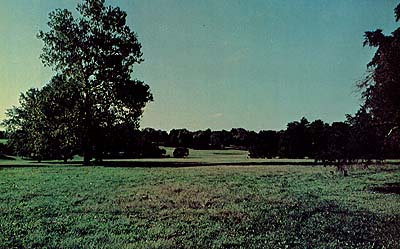
Bishop Partridge distributed over 2,000 acres of Church land among four Mormon settlements in Kaw township; 29,000 Civil War soldiers would fight the battle of Westport here on these same lands in 1864.
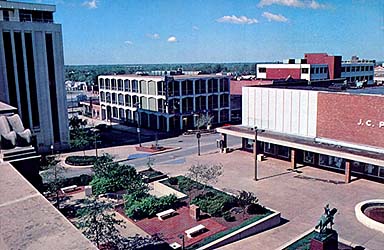
We are looking from the roof of the Jackson County Memorial Courthouse, built on the site of the courthouse noted in D&C 57:3 as “not far” from the temple site. The Gilbert and Whitney store stood on the site of the white-faced store touching the brick facade of Penny’s. Across the street to the left is the three-story bank with white-faced windows. On the left, on the site of the drive-in teller’s brick building, stood the Evening and Morning Star offices where revelations now in the Doctrine and Covenants were being printed. The press building was demolished and the store damaged on 20 July 1833 by approximately 500 Missourians who also beat, tarred, and feathered Bishop Partridge.

Across the Missouri River two miles away, hundreds of Latter-day Saints took refuge in makeshift shelters during the winter of 1834 in Clay County.
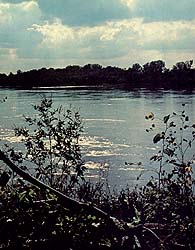
Driven out of Jackson County, the Saints crossed the Missouri River near this point by ferry at Independence Landing or other ferries near-by. It was November. Parley P. Pratt recorded: “Hundreds of people were seen in every direction, some in tents and some in the open air around their fires, while the rain descended in torrents. … Some had the good fortune to escape with their families, household goods, and some provisions; while others knew not the fate of their friends, and had lost all their goods. The scene was indescribable.” (Autobiography, 6th ed., Salt Lake City: Deseret Book, 1964, p. 102.)
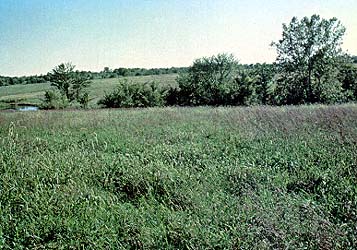
Here, on John Cooper’s rolling acres in northeastern Clay County, two miles north of Excelsior Springs, was the campsite for Zion’s Camp from June 19–22, 1834. They had come from Kirtland “to assist our brethren, to bring clothing, etc., and to reinstate them upon their land,” according to Reuben McBride, an expedition member. Here on June 22 Joseph Smith received the Fishing River revelation commanding: “It is expedient in me that mine elders should wait for a little season for the redemption of Zion” (D&C 105:9).

A violent storm on June 19 prevented a mob from attacking Zion’s Camp and drove the Prophet and others to seek shelter in a log Baptist church a half mile from the river. The church’s foundation stones, barely visible, are still just off the main road near Prathersville.
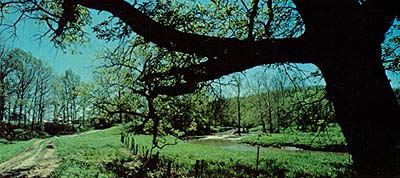
From Fishing River, the Prophet led Zion’s Camp to George Burket’s farm here on Rush Creek, two miles east of Liberty. A sudden and violent onslaught of cholera claimed the lives of several on the night of June 24. The victims were buried near where the creek turns out of sight in the center of the photo.

Seeking employment, Lyman Wight and Wilford Woodruff made brick and constructed a fine two-story home for Michael Arthur, a wealthy Clay County planter, during the summer of 1834. They lived in a log cabin in Arthur’s yard, shown here, while they worked; in that yard the Prophet disbanded Zion’s Camp, organized the first stake in Missouri on 3 July 1834, and set apart its presidency and high council.

Far West today is peaceful and pastoral. In 1838, it was Church headquarters. The Saints purchased thousands of acres of land in the area, but nothing now remains of their school, stores, homes, and bustling city.

In 1838, the Saints gathered in Far West in Missouri’s Caldwell County. The Prophet Joseph dedicated this grassy field as a temple site; and D&C 118 instructed the Twelve to depart on their missions for England from here. Even though the Saints were driven from the state, the faithful apostles returned to this site before starting their journey across the ocean. Four days before that revelation, on 4 July 1838 the cornerstones for the temple were laid. Pictured above is the southwest cornerstone, marking one corner of the 110-x-80-foot rectangle. Each cornerstone was laid by select groups of the priesthood in a grand procession of Church officers, militiamen, ladies, and gentlemen.
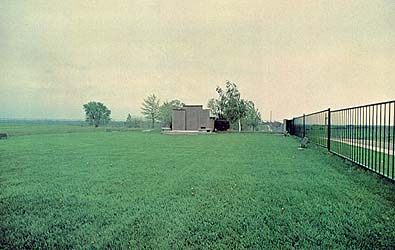
A commemorative monument erected in 1968 marks the temple site. Cornerstones are clearly visible next to the fence. All four corner markers may be seen in this photo.

[A] view of Adam-ondi-Ahman. [This] is part of the two-mile area Alanson Ripley surveyed for the village, complete with streets, shops, houses, and a stake.
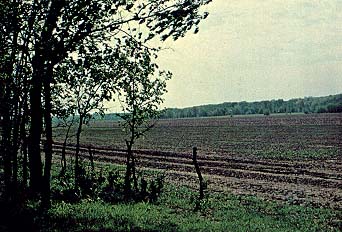
[A] view of Adam-ondi-Ahman. [This] is the valley, approximately a mile wide and two miles long, where Adam blessed his posterity and “where Adam shall come to visit his people” (D&C 107:53, 116). The Church owns the valley and much of the original village site, leasing it to farmers.
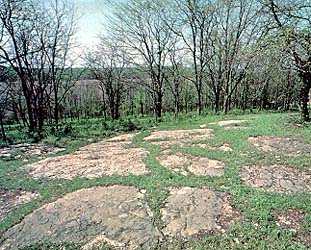
On these rocky bluffs separating the village of Adam-ondi-Ahman and the valley lies the site for Lyman Wight’s home. The valley’s broad floor is visible through the early spring foliage. Lyman Wight, an early convert in Kirtland, had baptized nearly a hundred people in Cincinnati, and many came with him to Jackson County. Captured with Joseph Smith at Far West and imprisoned with him in Liberty Jail, Lyman was called as an apostle in Nauvoo but later left the Church.
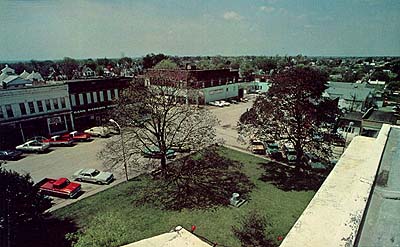
Looking down from the courthouse in Gallatin, Daviess County, we can see the courtyard where hostilities began in earnest over an election on 6 August 1838. Violence escalated until the Saints were driven out again.
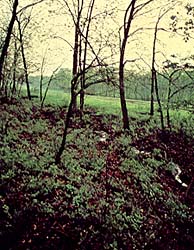
This depression on high ground is all that remains here of the road from Far West to Crooked River in Ray County. Down this path now overgrown by trees and brush, Mormon apostle David W. Patten, captain of the Mormon militia from Caldwell County, led his men in the early morning of 25 October 1838 in an attempt to rescue three Mormon prisoners held by Captain Samuel Bogart of the state militia. Seconds later, Bogart’s pickets opened fire and the Battle of Crooked River began.
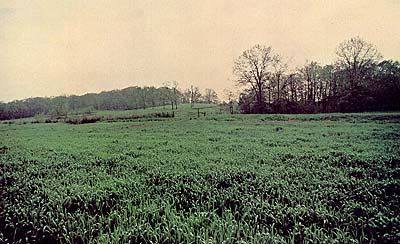
Bogart was camped in the field in the foreground with the ford a few rods to the rear. Elder Patten’s men came down the ridge in the distance. The skirmish wounded several Saints, killed Patrick O’Banion and Gideon Carter, and fatally wounded Elder Patten.
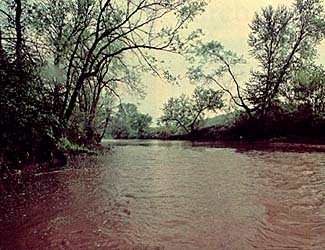
The Crooked River ford twelve miles south of Far West and about two miles southeast of present-day Elmira, Ray County. The ford, a limestone outcropping, is covered by heavy spring runoff in this photo.

Near the site of the Haun’s Mill massacre on Shoal Creek in Caldwell County. Here on 30 October 1838, Latter-day Saints were husking corn, digging potatoes, and preparing for winter when some two-hundred-and-forty ruffians decided to implement the Extermination Order of Governor Lilburn Boggs. They left nineteen men and boys dead.

Jacob Whitmer, died April 21, 1856, at fifty-six years, two months, and twenty-six days. One of the Eight Witnesses, he, like David Whitmer, left the Church and stayed in Missouri after the Saints moved on. The Church owns this pioneer cemetery in Richmond, Missouri.
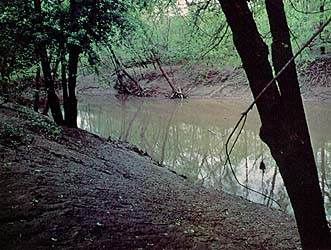
The tranquil waters of Shoal Creek, here muddy with spring runoff, welcomed Mormons in 1838. It had fertile soil and Jacob Haun had already constructed his mill on its bank fifteen miles east of Far West. Some of the Saints were still living in wagon boxes when the attack on the mill occurred.